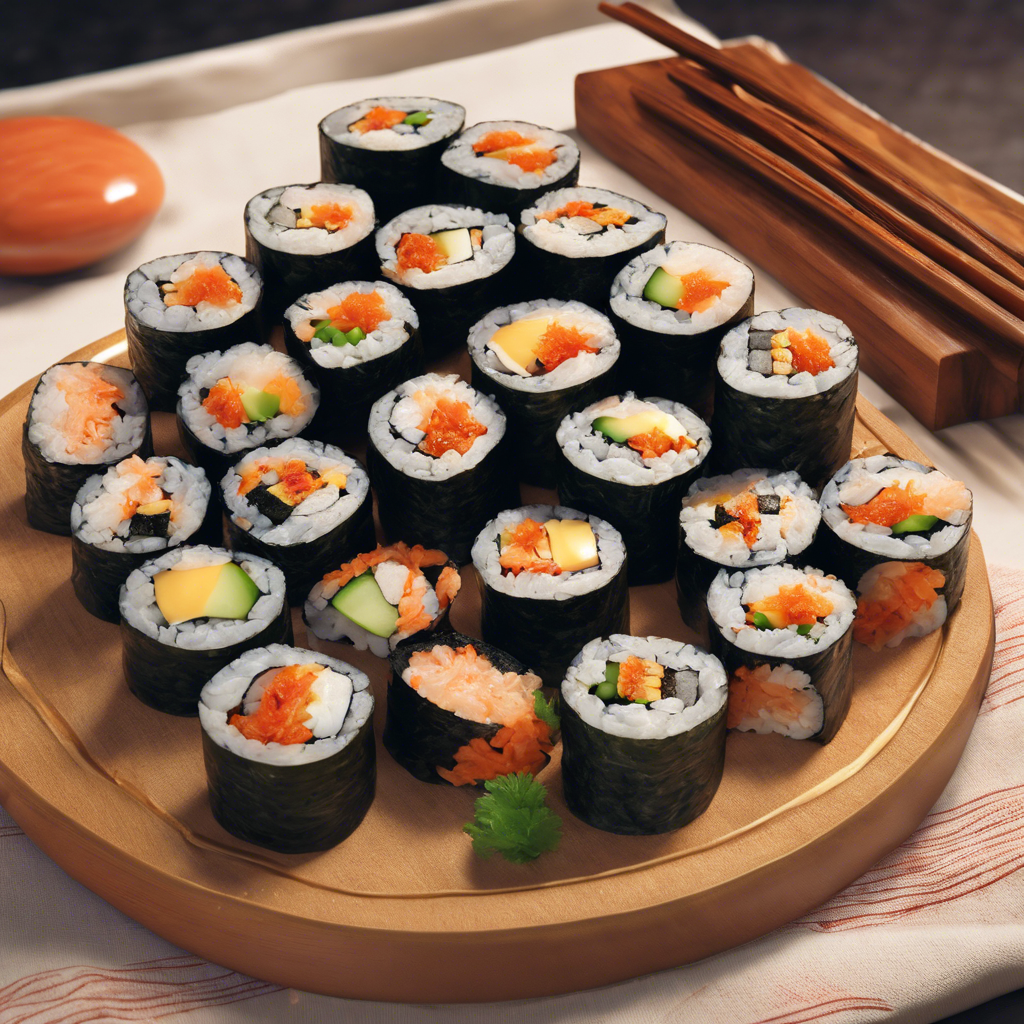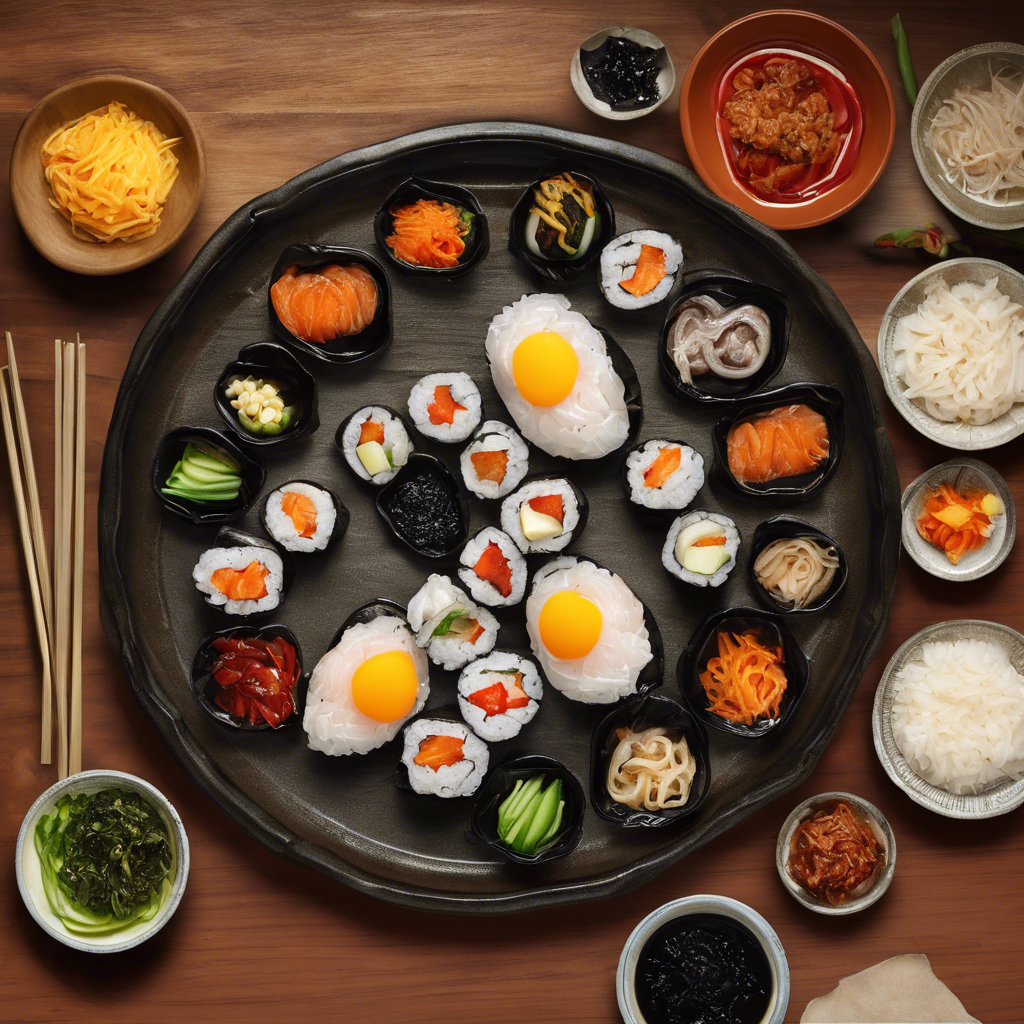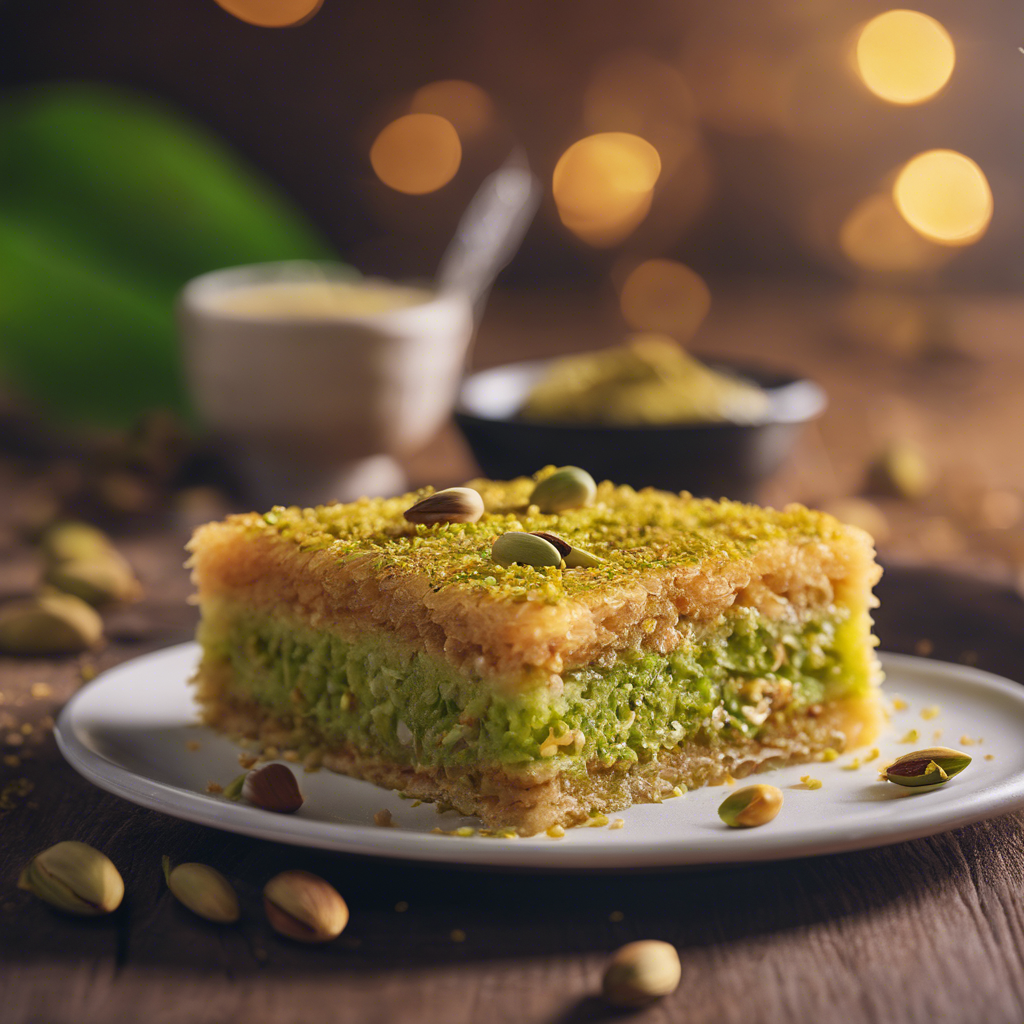
Your rating
Not rated yet!
Modify
Korean Kimbap
Created by: Howcan Team
Ingredients
- 3 cups cooked short-grain white rice
- 5 sheets of dried seaweed (nori)
- 1 tablespoon sesame oil
- 1 tablespoon rice vinegar
- 1 teaspoon sugar
- 1/2 teaspoon salt
- 1 carrot, julienned
- 1 cucumber, julienned
- 4-6 strips of pickled yellow radish
- 4-6 strips of cooked spinach
- 4-6 strips of imitation crab sticks
- 4-6 strips of cooked egg omelette
- Soy sauce, for dipping
Instructions
- In a small bowl, mix 1 tablespoon of sesame oil, 1 tablespoon of rice vinegar, 1 teaspoon of sugar, and 1/2 teaspoon of salt with the cooked rice. Set aside.
- Place a sheet of dried seaweed on a bamboo sushi mat or a clean kitchen towel.
- Spread a thin layer of seasoned rice evenly over the seaweed, leaving a small border at the top edge.
- Arrange the julienned carrot, cucumber, pickled yellow radish, spinach, crab sticks, and egg omelette in a line across the center of the rice.
- Starting from the bottom edge, tightly roll the seaweed and rice over the fillings, using the mat or towel to help create a firm roll.
- Moisten the top border of the seaweed with a little water to seal the roll.
- Repeat the process with the remaining seaweed sheets and fillings.
- Using a sharp knife, slice each roll into bite-sized pieces.
- Serve the kimbap with soy sauce for dipping.
- Enjoy your delicious homemade Korean kimbap!
Kimbap, a popular Korean dish, has a rich history dating back to the early 20th century. It was inspired by Japanese sushi and was initially known as "futomaki" in Korea. The dish gained popularity during the Japanese occupation, and its name was later changed to "kimbap" to reflect its Korean identity. Kimbap consists of rice, vegetables, and meat rolled in seaweed, making it a convenient and portable meal. Today, it is a staple in Korean cuisine and can be found in restaurants and street food stalls across the country. Notable chefs and restaurants, such as Gwangjang Market in Seoul, are renowned for their delicious kimbap. The key to a perfect kimbap lies in the freshness of the ingredients and the precise rolling technique. While traditional kimbap includes ingredients like pickled radish, spinach, and egg, modern variations may feature ingredients like bulgogi or spicy tuna. Whether enjoyed in a bustling city or a quaint village, kimbap continues to delight food enthusiasts with its flavorful and satisfying taste.

50 min
4-6 servings
300 per serving calories
Most popular recipes

Pistachio Kunafa
A delicious Middle Eastern dessert made with shredded phyllo dough, filled with a creamy pistachio mixture, and topped with a sprinkle of crushed pistachios.
75 min
8
320 calories

Pistachio Kunafa with Creamy Ricotta Cheese
A delicious Middle Eastern dessert with a creamy twist
75 min
8
380 calories

Yogurt Covered Raisins
Delicious and healthy yogurt covered raisins make for a perfect snack or dessert.
70 min
4 servings
150 calories
Most recent recipes

Southwest Veggie Wrap with Avocado
A delicious and healthy wrap filled with fresh vegetables and creamy avocado, perfect for a quick and easy lunch.
15 min
2
320 calories

Southwest Veggie Wrap with Grilled Tofu
A delicious and healthy wrap filled with grilled tofu and southwest-inspired veggies.
25 min
4
320 calories

Almond Chia Pudding
A delicious and healthy pudding made with almond milk and chia seeds.
5 min
2
180 calories